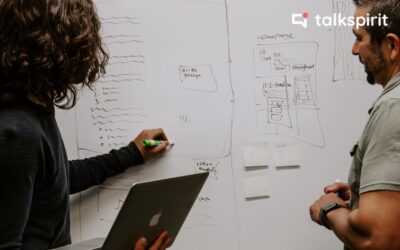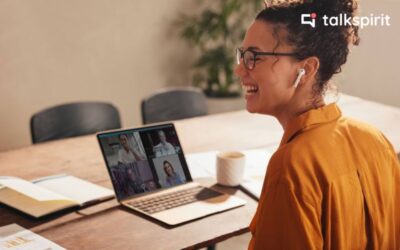Office design can play a large role in employee engagement. When employees connect with their environment, they can be more productive and engaged with their work—and when your office design features everything your employees need to successfully do their job, you set them (and your business) up for success. So, when you’re designing (or redesigning) your office, you want to make sure that space is both functional and on-trend.
But what, exactly, does that look like in 2021?
We asked Richard Yeo, Director of Advanced Commercial Interiors. ACI is a UK-based office design and fit out company that has partnered with some of the most well-known brands in the UK, including Honda, Harrod’s, Harvey Nichols, and Fonebank. Yeo, a veteran of the interiors industry for nearly 25 years, is one of ACI’s founding partners.
Let’s take a look at some of Yeo’s insights on this year’s biggest office design trends that will help you design a space that delivers on all your team’s needs—and looks stylish, timely, and on-trend at the same time.
Hot desks over dedicated workspaces
According to the Reimagining Human Experience study from JLL, 70 percent of employees favor a hybrid work model that allows them to split their time working in the office and working remotely. And that shift towards hybrid work is having a major influence on office design trends—most notably with workstations.
Also read: How Remote Work Is Redefining the Role of the Office
“We’ve seen that more and more companies are opting for a hot-desking setup,” says Richard Yeo. “This means that rather than everyone having their own dedicated desk within the office, the workstations are shared by several people. So, one day or week one person might be using it, but the next, it’ll be someone else.”
Hot desks are the perfect setup for a hybrid team; it allows companies to create functional workspaces to support their employees when they’re in the office—but doesn’t waste space creating dedicated workspaces for employees that are only in the office part-time.
A hot desk setup can also “save [hybrid] businesses a lot of money because they can downsize their office rather than leasing or buying a larger space,” says Yeo.
Wellness-focused design
Supporting employee wellness has always been important—but in the wake of COVID, it’s become a top priority. For example, according to a recent survey from Aetna International, a huge majority of employees say their mental health (84 percent) and physical health (89 percent) is more important to them now than it was a year ago—and 65 percent of employees would only return to the office if their employer changed their policies around workplace well-being.
Also read: Changing Work Modes: What Role Does QWL Play?
Supporting your team’s health and wellness is a must in today’s landscape. And, similar to the hot desk trend, this focus on wellness is having a direct influence on office design.
“With the rise of mental health awareness and a generalized upswing in active employee wellness initiatives across the world of work and business…more and more companies are looking for a human-centric design style [that] helps to promote wellness in the workplace,” says Yeo.
There are a lot of ways you can leverage design to support employee wellness; depending on your office and the space available, a wellness-centric design “might include meditation zones, relaxation areas, or even a games room,” says Yeo. “These are all aspects of an office that can help to keep employees happy [and healthy] at work.”
Abstract art
Art is a matter of personal preference—which makes it hard to pinpoint any trends.
That being said, there are certain types of art that are gaining popularity in 2021. “Something that we’re seeing more and more of is the inclusion of abstract art pieces,” says Yeo.
Abstract art (which includes geometric shapes and single-line drawings or paintings) will lend a sophisticated, modern feel to your office. And because it’s abstract, your employees can interpret it in whatever way they like—which lowers the risk of people flat out not liking the art you choose.
But if abstract art doesn’t feel true to your company or brand? Don’t worry about being on-trend—and, instead, choose pieces that reflect your personality and the energy you’re trying to create in your office.
“Everyone is different, and so they have different ideas of what ‘good’ art is—which means that it has to be [chosen and] organized on a very individual basis,” says Yeo.
Soft, airy color schemes
Color plays a huge role in design; depending on the colors you use, you can create completely different work environments. For example, bright, bold colors can add personality and make for a stimulating work environment—while soft, muted tones can make for a more relaxed workspace.
Similar to art, color is a matter of personal preference. But if you want your color palette to feel on trend in 2021? Plan to incorporate softer colors into your office design.
“The general [color] theme that we’ve seen over the last few months—and expect to see for the future—is a light and airy style,” says Yeo. “The types of colors that are being used…[include] light blues, whites, creams, and even greens. The nice thing about these colors is that they’re all able to work nicely together to create slightly earthy tones that promote a sense of calm to put you at ease while you work.”
Not only can these light, airy colors make for a more relaxing work environment, but they can also make your actual space look larger—which is a major bonus for smaller offices.
“This [color palette] is ideal for those…[in] a smaller office because it helps to open up the space and make it feel a lot bigger than it actually is,” says Yeo.
Modular design
One of the biggest challenges in designing an on-trend office? Trends go out of style—which means that a design that feels timely today may feel dated tomorrow.
Luckily, there’s a design method that can help you both embrace office design trends and invest in pieces that will stand the test of time; it’s called modular design.
“Staying on-trend can be tricky, but one of the best ways to…future proof your design is to create a modular space that you can make adjustments to whenever you’d like,” says Yeo. “In doing this, you’re able to swap out certain aspects and features for more up-to-date things.
For example, with modular design, you might use flexible partitioning to create different spaces (like hot desks and collaborative workspaces); then, if you decide your layout needs to change in the future, you can easily rearrange the partitions to create new, different changes—without investing in an expensive redesign or construction project.
Bottom line? Modular design gives you the ability to easily change, adapt, and evolve your space—which will make it easy to keep up with trends (without having to continually reinvest in your office design), both today and in the future.
*
* *
You want to design an office space that makes your employees excited to come to work. And now that you know the biggest office design trends for 2021, you have all the inspiration you need to create a functional, on-trend, and inspiring workspace for your team. So what are you waiting for? Get out there and get designing!
Are you looking to increase employee productivity and engagement using office design? If so, we invite you to read our latest article on this topic:
–
Author: Deanna deBara

![[Expert opinion] How HR can improve psychological safety in the workplace](https://blog.talkspirit.com/wp-content/uploads/2023/11/How-can-HR-improve-psychological-safety-in-the-workplace-400x250.jpg)

